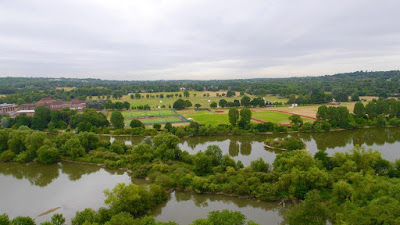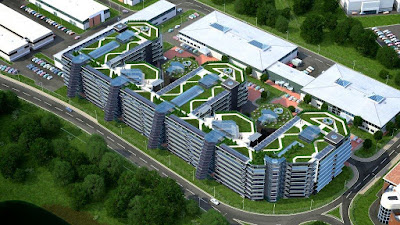We have recently produced a Landscape and Townscape Assessment in Bristol. In doing so we have considered the following:
Bristol’s Landscape Character
Bristol is a city with a diverse landscape character, ranging from the rolling hills of the Mendip Hills to the urban waterfront of the River Avon. Any development proposal must be carefully considered in the context of the surrounding landscape, and should not unduly harm its character.

View from Castle Park Bristol
View Corridors
Bristol is a city with many important view corridors, both within the city itself and to the surrounding countryside. Any development proposal must be carefully considered in the context of these view corridors, and should not obstruct important views.
Sustainability
Bristol is committed to sustainability, and any development proposal must be sustainable in its design and construction. This includes consideration of factors such as energy efficiency, water conservation, and the use of local materials.
Community Impact
Any development proposal must be considered in the context of its impact on the local community. This includes factors such as traffic congestion, noise pollution, and the loss of green space.
In addition to these general considerations, there are also a number of specific considerations that may apply to particular development proposals in Bristol. For example, if a development proposal is located in a conservation area, it will need to be carefully considered in the context of the area’s special character. Similarly, if a development proposal is located in a floodplain, it will need to be designed to mitigate the risk of flooding.
Conclusions
The landscape and townscape assessment process is an important part of ensuring that development in Bristol is sustainable and sensitive to its surroundings. By carefully considering the factors outlined above, developers can help to ensure that their proposals make a positive contribution to the city’s landscape and townscape.
Useful Tips
Here are some additional tips for landscape and townscape assessment in Bristol:
- Consult with local stakeholders: It is important to consult with local stakeholders, such as residents, businesses, and community groups, to get their input on development proposals. This can help to ensure that proposals are compatible with the needs and priorities of the local community.
- Use visual impact assessment: Visual impact assessment can be a useful tool for assessing the potential impact of a development proposal on the surrounding landscape and townscape. This can help to identify potential problems early on in the planning process, and to develop mitigation measures to address them.
- Consider the long-term impact: It is important to consider the long-term impact of a development proposal, not just the immediate impact. This includes factors such as the impact on the environment, the economy, and the quality of life for residents.
- Be creative and innovative: There are often ways to mitigate the negative impacts of development on the landscape and townscape. For example, developers can use green roofs and walls to add greenery to buildings, and they can plant trees and shrubs to screen unsightly development from view.




.jpg)
.jpg)
